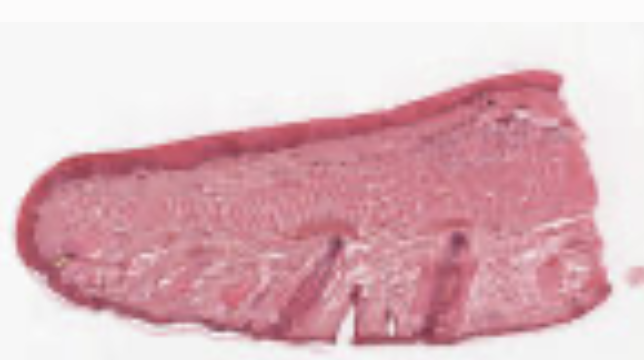This page is intended as a guide during the resource session on June 28.
This material should remain available indefinitely, at this location.
Follow the links below if you wish to read further about today's topics.
Topics for today:
- Orientation
- Viewing histological specimens
- Gastrointestinal system / Layers (expands on ideas in the "common patterns" essay)
- Gastrointestinal system / Regions
- Gastrointestinal system / Glands (expands on ideas in the "common patterns" essay)
- Liver (a fascinating organ with a very peculiar tissue organization)
- Epithelial tissue (expands on ideas in "core concepts" essay)
- Connective tissue (expands on ideas in "core concepts" essay)
- Skin (epithelium and connective tissue in a familiar context)
- Blood (Suggestion: skim through connective tissue before studying blood.)
- Inflammation (white blood cells in action)

I apologize for imposing a required session. It shouldn't happen again.
I try to put everything that I might say to you into webpage resources, which you may browse at a time of your own choosing. My main purpose today is to acquaint you with those resources.
I do, however, extend the following invitation:
- You may send to me any histo-related questions, by email or text or voicemail.
- If you examine virtual slides, you may send me screen-grab or smart-phone images of tissues that you have questions about.
- You may request further in-person sessions, to be scheduled through Ms. Grisley.
(This might include slide-viewing sessions with the group-viewing microscope in down the hall in this building.)
I shall try to respond promptly, either with answers to your questions or with mark-up labelling of images you send. (I would hope to reply within a few hours, but turn-around time cannot be guaranteed.)
If you do try to contact me, please identify yourselves as LSP students: I do not respond to messages from unknown senders, and I shall NOT normally respond between 10:00pm and 7:00am. My number is ...
Histo might not appear as a core learning objective until your pathology rotation. But if you wait until then to establish a histological perspective on the human body, you could face quite a slog.
Because a histological perspective contributes significantly to several aspects of medical education, it can be advantageous to begin your study as soon as practical. So:
- The GI system is an especially good place to begin acquainting yourself with histology.
- First, let me show you something:
Google
- From here, to find histology materials written specifically for LSP, click on Lincoln Scholars Program Histology. From anywhere else, just Google "Lincoln Histology" or "SIU Histology".
I hope you have read my recommended essays on basic concepts in histology and common patterns of tissue architecture.
- What is histology?
- What are the core concepts of histology?
- What are the most common patterns of tissue organization?
Appearance of tissues in slides / micrographs.
- Helpful background (further reading):
- Most tissue components are colorless, at least when thinly sliced.
- The colors you see in routine micrographs are from dyes added for contrast
- With the most widely-used stain protocol (called H&E, for hematoxylin and eosin):
- Nuclei typically appear as deeply-stained dark dots.
- Cytoplasm, including muscle, commonly stains pink (sometimes tinged with purple).
- Collagen stains pink.
Since collagen is the most abundant protein in the body, much of the pink stuff in many micrographs will be collagen.
If we have wifi, let's begin viewing a "virtual slide" of a specimen from the entry into the GI tract:

The lip.
[Virtual slide from U. Michigan]OR
The lip.
[Virtual slide from U. Michigan]OR
esophagus stomach
small intestine
colon
parotid gland
liverThe lip. [Virtual slide from Loyola U.]
Additional virtual slide resources.
From here, I intend to survey the GI tract, using links
to pages within the main histo website.
- Contents for traditional curriculum
- Image index for this website
- If you have a taste for history, see Eponyms in histology.
SEARCH THE SITE:

Comments and questions: dgking@siu.edu
SIUC / School
of Medicine / Anatomy / David
King
https://histology.siu.edu//LincolnScholarsProgram/2023-June28.htm
Last updated: 28 June 2023 / dgk





